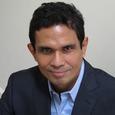Introduction to Spatial Agent-Based Modeling

Day May 28, 2018
From 9:00 till 13:00
Instructor:
Yuri Mansury
Department of Social Sciences
Illinois Institute of Technology
Chicago, IL 60616, USA
ymansury@iit.edu
Yuri Mansury (Ph.D. in Regional Science) is a tenured Associate Professor of Social Sciences at Illinois Institute of Technology, USA. He has developed two courses on computational methods in regional science, one of which focuses on spatial agent-based modeling, and is the methodological foundation for one section of this tutorial. He has published numerous peer-reviewed articles in the Annals of Regional Science, Regional Science Policy and Practice, Journal of Economic Dynamics and Control, and Economic Development Quarterly, among others, and the author of numerous book chapters and conference presentations.
Abstract:
Following the success of the workshops held for the NARSC meetings in 2012 Ottawa and 2013 Atlanta, we invite participants of the 2018 RSAI World Congress in Goa, India, to a tutorial on agent-based modeling (ABM) of spatial systems. We will present ABM programming algorithms and advise for the beginners in agent-based modeling. NetLogo is the principal programming platform. Participants will receive handouts describing the algorithms and their documentations, as well as electronic copies of the NetLogo implementation. We will discuss models where spatial patterns emerge from the uncoordinated actions of heterogeneous agents. Examples covered include models of Residential Segregation and Iterated Prisoner’s Dilemma. The tutorial will proceed in stages where (i) ABM techniques and application are presented; (ii) the role of space is examined; (iii) participants gain hands-on experience working through ABM tutorials.
Agenda:
The program is designed as a four-hour tutorial workshop as follows:
Hour 1
Logistics, introduction to ABM, motivation, some basic definitions, and a brief history of ABM in regional science
Hour 2
Introduction to Schelling’s theoretical framework, simulating a pre-programmed implementation, and discussion
Hour 3
Implementing the Residential Segregation algorithm in NetLogo
Hour 4
Extensions: Integrating geographic information systems (GIS) data into an agent-based model. Examining impact of parameter tuning and spatial analysis.
Highlights:
ABM principles are introduced; Integration of GIS into ABM is demonstrated.
Intended audience:
Graduate students, postdoctoral fellows, and faculty members who are new to agent-based modeling and its use for geo-spatial analysis.
Hardware and Software Requirements:
Every participant must bring a laptop, in which the latest version of NetLogo (free download from http://ccl.northwestern.edu/netlogo/) and the NetLogo GIS extension have been pre-installed. Participants will receive installation instructions prior to the tutorial. Ideally, all participants will also have wireless internet access, but the tutorial could proceed without these as internet use will not be central to the tutorial. Laptops must have USB 2.0 support to port materials and codes provided during the tutorial by the presenters.
From 9:00 till 13:00
Instructor:
Yuri Mansury
Department of Social Sciences
Illinois Institute of Technology
Chicago, IL 60616, USA
ymansury@iit.edu
Yuri Mansury (Ph.D. in Regional Science) is a tenured Associate Professor of Social Sciences at Illinois Institute of Technology, USA. He has developed two courses on computational methods in regional science, one of which focuses on spatial agent-based modeling, and is the methodological foundation for one section of this tutorial. He has published numerous peer-reviewed articles in the Annals of Regional Science, Regional Science Policy and Practice, Journal of Economic Dynamics and Control, and Economic Development Quarterly, among others, and the author of numerous book chapters and conference presentations.
Abstract:
Following the success of the workshops held for the NARSC meetings in 2012 Ottawa and 2013 Atlanta, we invite participants of the 2018 RSAI World Congress in Goa, India, to a tutorial on agent-based modeling (ABM) of spatial systems. We will present ABM programming algorithms and advise for the beginners in agent-based modeling. NetLogo is the principal programming platform. Participants will receive handouts describing the algorithms and their documentations, as well as electronic copies of the NetLogo implementation. We will discuss models where spatial patterns emerge from the uncoordinated actions of heterogeneous agents. Examples covered include models of Residential Segregation and Iterated Prisoner’s Dilemma. The tutorial will proceed in stages where (i) ABM techniques and application are presented; (ii) the role of space is examined; (iii) participants gain hands-on experience working through ABM tutorials.
Agenda:
The program is designed as a four-hour tutorial workshop as follows:
Hour 1
Logistics, introduction to ABM, motivation, some basic definitions, and a brief history of ABM in regional science
Hour 2
Introduction to Schelling’s theoretical framework, simulating a pre-programmed implementation, and discussion
Hour 3
Implementing the Residential Segregation algorithm in NetLogo
Hour 4
Extensions: Integrating geographic information systems (GIS) data into an agent-based model. Examining impact of parameter tuning and spatial analysis.
Highlights:
ABM principles are introduced; Integration of GIS into ABM is demonstrated.
Intended audience:
Graduate students, postdoctoral fellows, and faculty members who are new to agent-based modeling and its use for geo-spatial analysis.
Hardware and Software Requirements:
Every participant must bring a laptop, in which the latest version of NetLogo (free download from http://ccl.northwestern.edu/netlogo/) and the NetLogo GIS extension have been pre-installed. Participants will receive installation instructions prior to the tutorial. Ideally, all participants will also have wireless internet access, but the tutorial could proceed without these as internet use will not be central to the tutorial. Laptops must have USB 2.0 support to port materials and codes provided during the tutorial by the presenters.
